Streams in the boreal forest emit more carbon dioxide than previously thought, a new study shows. Researchers discovered that previous studies on CO2 emissions from lakes and groundwater only studied the endpoints of streams and rivers. Studying carbon isotopes ratios from various points in groundwater allowed the researchers discovered previously unaccounted for CO2 emissions. The boreal forest […]
Tag: Ontario

CPR guidelines could be improved
Three physicians argue for re-introducing the traditional ‘head-tilt-chin-lift’ technique to cardiopulmonary resuscitation (CPR) for untrained bystanders in a new commentary article. The technique was eliminated as part of an effort to make CPR instructions easier to understand and thus more likely to be used. The authors say that completely removing mouth-to-mouth instructions is dangerous for patients […]
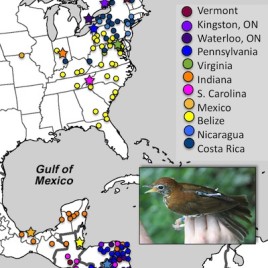
Wood thrushes ‘leap-frog’ during migration
Researchers have published the first detailed migratory map for different populations of wood thrushes. Over 100 birds were tracked using geolocators, a kind of ‘bird backpack’ that records sunrise and sunset times. Among other things, researchers found that the birds which travelled furthest north in the summer are also the ones that travel furthest south […]
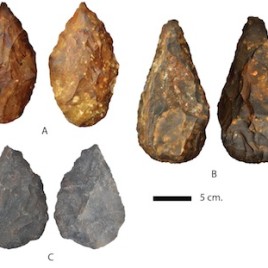
Site of artefacts under threat
A new paper documents the rich density of artifacts found in the Kathu Townlands site in the Northern Cape province of South Africa. The site is dominated by a type of rock called chert that is ideal for making hand axes, small blades and other stone tools, and shows abundant evidence of having been […]
Bacteria present in semen linked to HIV transmission
A new study has found that the diversity and number of bacteria in semen are connected with the level of HIV virus and thus the risk of transmission. While bacteria are common in semen, the study found that HIV-infected men who have sex with men have lower bacterial diversity than uninfected controls. They also found […]
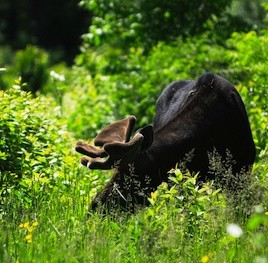
Moose spit de-toxifies plants
Moose and reindeer saliva may inhibit the growth of a toxic fungus that lives inside the grass known as red fescue. The researchers collected saliva from moose and reindeer from Canadian zoos, then applied it to grass that contained the toxic fungus. Their results showed that fungus grew more slowly and in some cases produced […]
Seniors still at risk of stroke 2 years after heart surgery
Older people who have undergone surgery are at increased risk of suffering a stroke for up to 2 years afterward, a new study shows. While it was known that the risk increases immediately after surgery, the new study shows that the risk period extends longer than expected. Researchers followed 108,711 patients who had cardiac surgery […]
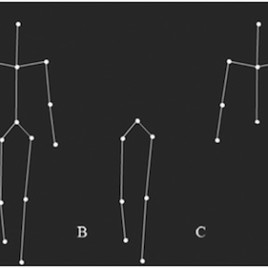
Measuring anxiety with optical illusions
A classic optical illusion has provided insight into how anxiety influences our view of the world. Researchers used animated stick figures to assess participants’ perceptions. These figures have no depth, allowing them to be perceived as either walking toward the viewer (i.e. more hostile) or away (less hostile). Participants who had completed an anxiety reduction task (breathing […]
Canadian intelligence analysts sometimes lack confidence in their forecasts
Senior intelligence analysts working in the Privy Council Office have a tendency to lack confidence in their forecasts, a new study shows. The authors analyzed more than 1,500 strategic intelligence forecasts made by analysts advising senior policy makers in the Government of Canada, encompassing 6 years worth of reports. The usual finding in the forecasting […]
Community-based approach helps fight TB in Nunavut
A community-based approach to TB awareness and screening in Nunavut has resulted in an increase in detection and treatment. Nunavut is the only area of Canada where TB rates are increasing; in 2010 it was 60 times higher than the national rate. An awareness and door-to-door screening campaign called Taima TB – Taima is Inuktitut for […]

Super Cryogenic Dark Matter Search comes to Sudbury
Super Cryogenic Dark Matter Search (Super CDMS) aims to measure the signals from exotic particles called WIMPs (Weakly Interacting Massive Particles) as they pass through a detector made of germanium. It is an international, multimillion dollar dark matter experiment currently based in Minnesota. Funding has recently been announced that will allow SuperCDMS to build a more sensitive […]
Lower risk of cerebral palsy among immigrant children
A new study shows that babies born in Ontario from immigrant mothers have a 23% lower risk of cerebral palsy (CP), a common motor disability that appears at age 4 and for which there is no cure. The study followed all single births in Ontario from 2002 to 2008. The rate of CP among non-immigrant […]
Cardiac rehabilitation is underused worldwide
Helping patients manage heart disease through diet and exercise is a proven and cost-effective strategy, yet its use worldwide is limited, a new review shows. Cardiac rehabilitation programs provide education, exercise and risk reduction and have been shown to reduce mortality by up to 25 per cent. Yet worldwide, only 39 per cent of countries […]
Ontario physicians more likely to register for organ donations than general public
A new study led on 15,000 physicians in Ontario shows that 43.3 percent of them registered for organ and tissue donation, an higher rate than the general population (23.9 percent). This is the first study to document rates of actual organ donor registration among physicians in Canada, and authors conclude that this finding should help […]
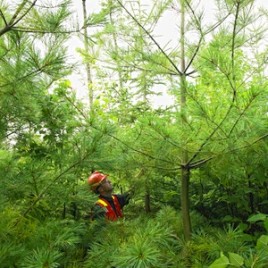
A tale of good fungus, bad fungus
Researchers have found a new source for a fungus-fighting chemical: the pine trees and blueberry bushes of the Acadian forest. Griseofulvin is a compound originally isolated from a mould in the same family as those which produce penicillin. It’s used to fight fungal infections in humans and animals, but has also been used as a fungicide […]

Exposure to pesticides impairs bees’ foraging ability
A new analysis confirms that exposure to pesticides – including one in the neonicotinoid (neonic) class – has a negative impact on bees’ foraging ability. The study used radio-frequency identification (RFID) tags to track 259 bees from 40 colonies over 4 weeks. Bees exposed to the neonic pesticide either by itself or mixed with another […]
